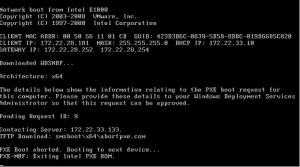How to Set Up a Home Network: A Step-by-Step Guide


How to Set Up a Home Network: A Step-by-Step Guide


Setting up a home network is essential for connecting your devices, sharing files, and accessing the internet from multiple devices in your household. Whether you’re a beginner or have some technical knowledge, this step-by-step guide will walk you through the process of setting up a home network.
Step 1: Determine Your Network Requirements
Before you start setting up your home network, it’s important to determine your specific requirements. Consider the following:
- The number of devices you want to connect to the network (e.g., computers, smartphones, smart TVs, gaming consoles).
- The network speed and range you need to cover your entire home.
- The type of network you want to create (wired, wireless, or a combination of both).
Step 2: Choose Your Networking Equipment
Based on your requirements, choose the appropriate networking equipment:
- Modem: If you don’t already have one, you’ll need a modem to connect to your internet service provider (ISP).
- Router: A router connects to your modem and allows multiple devices to access the internet and communicate with each other. Make sure to choose a router that supports your desired network type (e.g., wired, wireless, or both).
- Ethernet cables: If you’re planning to have wired connections, purchase Ethernet cables of suitable length to connect your devices to the router.
- Wireless adapters: If your devices don’t have built-in wireless capability, consider purchasing wireless adapters.
Step 3: Set Up Your Modem
Follow these steps to set up your modem:
- Connect one end of a coaxial cable to the cable outlet on the wall and the other end to the cable input on your modem.
- Use an Ethernet cable to connect the modem’s Ethernet port to the WAN (Wide Area Network) port on your router.
- Power on the modem and wait for it to establish a connection with your ISP. This may take a few minutes.
Step 4: Set Up Your Router
Now it’s time to set up your router:
- Connect one end of an Ethernet cable to any of the LAN (Local Area Network) ports on the router and the other end to the Ethernet port on your computer.
- Connect the power adapter to your router and plug it into a power outlet.
- Wait for the router to power on and establish a connection with the modem. This may take a few minutes.
- Open a web browser on your computer and enter the router’s default IP address (e.g., 192.168.1.1) in the address bar. This information can usually be found in the router’s user manual or on the manufacturer’s website.
- Enter the default username and password provided with the router. If you can’t find this information, check the router’s user manual or consult the manufacturer’s website.
- Follow the router’s setup wizard to configure your network settings, such as the network name (SSID) and password. It’s recommended to use a strong and unique password.
- Save your settings and wait for the router to restart.
Step 5: Configure Network Security
Securing your home network is crucial to protect your data and devices from unauthorized access. Follow these steps to configure network security:
- Change the default administrator username and password for your router. Use a strong password that’s different from the Wi-Fi password.
- Enable network encryption (WPA2 or WPA3) and set a strong Wi-Fi password. This will prevent unauthorized users from accessing your network.
- Disable remote management unless you have a specific need for it.
- Enable the firewall on your router to provide an additionallayer of protection against potential threats.
Step 6: Connect Your Devices
Now that your network is set up, it’s time to connect your devices:
- For wired connections, use Ethernet cables to connect your devices to the available LAN ports on the router.
- For wireless connections, on each device, search for available Wi-Fi networks and select your network name (SSID). Enter the Wi-Fi password when prompted.
- Once connected, test the internet connection on each device to ensure they are properly connected to the network.
Step 7: Customize Your Network Settings
To further optimize your home network, consider the following customization options:
- Assign static IP addresses to devices that require port forwarding or need to maintain a consistent IP address.
- Set up port forwarding if you need to allow incoming connections to specific devices or applications.
- Enable Quality of Service (QoS) settings to prioritize network traffic for certain devices or applications that require higher bandwidth.
Step 8: Expand Your Network (Optional)
If you have a large home or want to extend your network coverage, you may need to expand your network using additional networking equipment:
- Wi-Fi Range Extenders: These devices amplify the Wi-Fi signal and extend the network coverage to areas with weak signal strength.
- Powerline Adapters: Powerline adapters use your home’s electrical wiring to transmit network signals, allowing you to create wired connections in areas where Wi-Fi coverage is insufficient.
- Additional Access Points: You can set up additional access points connected to your main router to provide better Wi-Fi coverage throughout your home.
Conclusion
By following this step-by-step guide, you can easily set up a home network that meets your specific requirements. Remember to choose the right networking equipment, set up your modem and router correctly, configure network security, connect your devices, and customize network settings as needed. With a properly set up home network, you can enjoy seamless connectivity, file sharing, and internet access across all your devices within your home.








